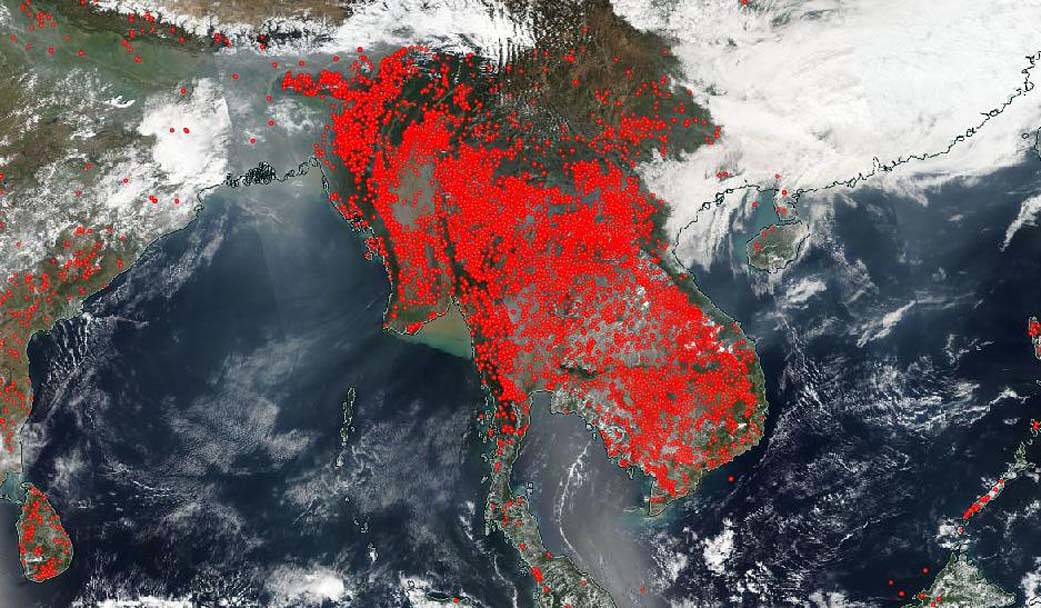NOAA/NASA’s Suomi NPP satellite captured this image hundreds of fires burning across Laos, Myanmar, Thailand, Cambodia and Vietnam on March 13, 2020.The entire southeastern Asian peninsula appears to be on fire.There are many reasons that fires start including weather related lightning which ignites dry trees and grasses. But in this instance the most likely reason for the fires is agricultural. At this time of year farmers in southeast Asia light their fields on fire in order to clear them of detritus for the next growing season. Fires (although not quite as many) were also visible in February 19, 2020 when this image was posted.
NASA’s satellite instruments are often the first to detect wildfires burning in remote regions, and the locations of new fires are sent directly to land managers worldwide within hours of the satellite overpass. Together, NASA instruments detect actively burning fires, track the transport of smoke from fires, provide information for fire management, and map the extent of changes to ecosystems, based on the extent and severity of burn scars. NASA has a fleet of Earth-observing instruments, many of which contribute to our understanding of fire in the Earth system. Satellites in orbit around the poles provide observations of the entire planet several times per day, whereas satellites in a geostationary orbit provide coarse-resolution imagery of fires, smoke and clouds every five to 15 minutes. For more information visit: https://www.nasa.gov/mission_pages/fires/main/missions/index.html
NASA’s Earth Observing System Data and Information System (EOSDIS) Worldview application provides the capability to interactively browse over 700 global, full-resolution satellite imagery layers and then download the underlying data. Many of the available imagery layers are updated within three hours of observation, essentially showing the entire Earth as it looks “right now.” This satellite image was collected on Feb. 18. 2020. Actively burning fires, detected by thermal bands, are shown as red points. Image Courtesy: NASA Worldview, Earth Observing System Data and Information System (EOSDIS). Caption: Lynn Jenner























